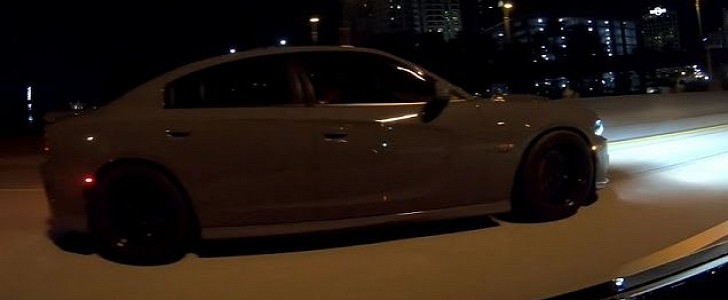Let's say you drive a Dodge Charger sporting the most muscular N/A HEMI in the range, the majestic 392, and you've decided to supercharge that 6.4-liter V8. Sure, the boost will work wonders in terms of acceleration, but, as the drag race we have here shows you can also run into trouble.
The velocity battle that brought us here saw the said Mopar machine duke it out with a sixth-generation Chevrolet Camaro SS. And, as the YouTube label behind the piece of footage below (Can I Be Frank) explains, the 6.2-liter V8 of the Camaro has kept its atmospheric nature. Nevertheless, the LT1 motor has been gifted with mods that can be labeled as full bolt-ons, while an E85 setup is on the list of goodies.
Both the Chevy and the Dodge come with eight-speed automatic trannies, so there's no difference here. Nevertheless, we have to keep in mind that the four-door is some 700 lbs (over 300 kilos) meatier than the coupe.
Now, the two muscle monsters duked it out on two separate occasions, and we'll remind you not to use such street brawls as an example - hitting the drag strip is the way to go since it allows drivers to keep such adventures on the safe side.
Getting an even start is often difficult during such rolling shenanigans and, from where we're standing, it looks like the Charger took off slightly before the Camaro during the first race.
However, we can see a clear difference between the sprinting abilities the muscle sedan showcased in the first run and those exhibited during the second one.
And one of the most probable causes of this is heat soak, which is made worse by the supercharger compressing the air and the fact that the iron block of the HEMI means heat absorption and dissipation take place slowly. As the engine heats up, all of its parts get hotter, with this increasing the intake air temperature and determining the ECU to retard the timing in order to avoid detonation (think power loss). Of course, the high temperatures can also affect the reliability of the motor.
Both the Chevy and the Dodge come with eight-speed automatic trannies, so there's no difference here. Nevertheless, we have to keep in mind that the four-door is some 700 lbs (over 300 kilos) meatier than the coupe.
Now, the two muscle monsters duked it out on two separate occasions, and we'll remind you not to use such street brawls as an example - hitting the drag strip is the way to go since it allows drivers to keep such adventures on the safe side.
Getting an even start is often difficult during such rolling shenanigans and, from where we're standing, it looks like the Charger took off slightly before the Camaro during the first race.
However, we can see a clear difference between the sprinting abilities the muscle sedan showcased in the first run and those exhibited during the second one.
And one of the most probable causes of this is heat soak, which is made worse by the supercharger compressing the air and the fact that the iron block of the HEMI means heat absorption and dissipation take place slowly. As the engine heats up, all of its parts get hotter, with this increasing the intake air temperature and determining the ECU to retard the timing in order to avoid detonation (think power loss). Of course, the high temperatures can also affect the reliability of the motor.





